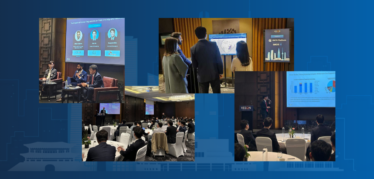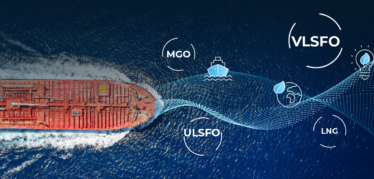A few months back, Veson Product Manager Josh Luby shared an insightful blog post about the benefits of taking a proactive approach to risk management. In this post, Josh discussed the uniquely volatile nature of the maritime shipping landscape, which is subject to constant fluctuations in freight rates, bunker prices, vessel values, time charters, interest rates, foreign exchange rates, and more. All of these aspects of the risk equation, coupled with unanticipated shocks to the market and heightened liquidity, have spotlighted the importance of intentional risk management.
In years past, proactive risk management was a practice primarily reserved for the world’s trading houses, whose familiarity with the many dimensions of risk led them to proactively manage and mitigate exposure for freight and fuel, in addition to the core commodities they trade. But trading and risk management is not just for commodities traders. It is a powerful and critically important function for any stakeholder in the maritime shipping ecosystem.
Let’s take a closer look at the three primary commercial stakeholders in the maritime shipping ecosystem, and where the management of freight and fuel risk fits within their business model.
Commodities Traders: Managing another layer of the risk equation.
Let’s start with the most obvious: the commodities trader. As mentioned above, the ability to manage and mitigate risk is at the core of the trading house’s business model. It’s not a far leap, therefore, for the commodities trader to extend its field of vision to include freight and fuel exposure, two layers of risk that have a profound impact on the profitability of each trade. In many cases, a dip in commodity prices leads to a spike of freight’s weight in CFR or other cost-inclusive contracts, which call for more prudent execution. On the other hand, a rise in commodity price spread would present geographical arbitrage opportunity, if freight is properly hedged. Therefore, when they properly observe the freight market and proactively manage risk of both commodity and freight, traders can significantly enhance their commercial success.
Shipowners & Operators: Stabilizing commercial success.
For the shipowner or operator, significant exposure exists for freight contracts and for bunker positions, both of which are continually changing. A surge in bunker prices can radically impact the profitability of the business. Alternately, unfavorable market conditions for a given commodity can quickly drive down the value of commercial assets. In both of these scenarios, the systematic measurement of exposure and the execution of paper trades to offset that risk can improve commercial success—particularly amid the unprecedented realities of today’s market. By embracing proactive risk management as a core aspect of their commercial workflow, shipowners and operators can proactively hedge their exposure, stabilize their business, and assess voyage performance inclusive of paper trades.
Tonnage Charterers: Controlling supply chain costs.
The third stakeholder is the tonnage charterer, for whom marine shipping costs comprise a substantial portion of global supply chain expenses. Fright and bunker prices are continuously impacting the tonnage charterer’s P&L. For example, an extended surge in freight prices could reduce the profitability of a given product line significantly. Conversely, a plummet in freight prices could provide an opportunity to contain costs and improve margins. By incorporating proactive risk management into their seaborne supply chain workflows, tonnage charterers can gain a new, market-linked perspective that can be utilized to mitigate costs proactively.
VIP Trading & Risk: Proactive Risk Management for Every Marine Stakeholder
Commodities traders, shipowners and operators, and tonnage charterers are impacted by freight and fuel risk in distinctly different ways. But all stand to benefit equally from the management of this exposure in a central workspace that is tightly integrated with the rest of their marine workflows. That’s where VIP Trading & Risk comes in. As a powerful industry solution in the Veson IMOS Platform (VIP), VIP Trading & Risk combines market-linked pricing with real-time business data to provide users a factual assessment of mark-to-market performance that empowers them to take a more proactive and data-driven approach to risk management.



 Giftson Eliyesar
Giftson Eliyesar
 Hongbeom Park
Hongbeom Park
 Oliver Kirkham
Oliver Kirkham